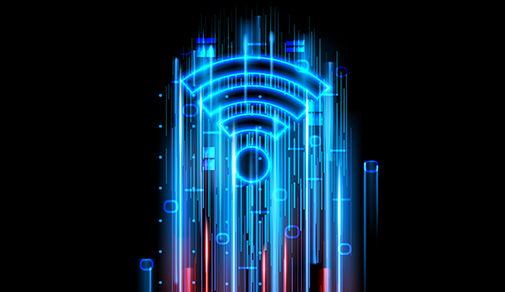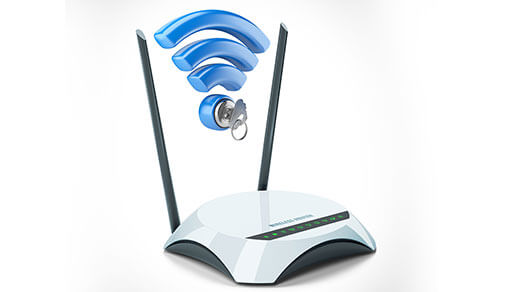
The Digital era demands a strong and dependable best WiFi connection. It helps you stream your favorite movies or play online video games. But what is WiFi speed? This guide will teach you everything about Wi-Fi connection and how is WiFi speed measured.
What is WiFi Speed?
WiFi speed is the rate at which data is transferred between your devices, such as smartphones, laptops, tablets, and WiFi routers. It can be expressed in megabits per second (Mbps) or gigabits per second (Gbps).
This means higher downloading speeds whenever the WiFi has higher Mbps. The time it takes for web pages to load depends on WiFi speed; the better the speeds, the smoother video calls get, and large files transfer faster.
How is WiFi Speed Measured?
Here is how WiFi speed is measured.
Megabits (Mbps): One of the most common ways to measure WiFi speeds. A megabit equals one million bits. Higher Mbps means faster internet.
Gigabits (Gbps): This refers to incredibly fast internet connections. One gigabit equals one billion bits.
Why is WiFi Speed Important?
WiFi speed is important as it directly impacts your internet experience. Below are several reasons why internet speed is important:
Streaming and Gaming: High-speed Wi-Fi allows smooth HD video streaming without buffering. Lower latency, and thus improved gaming performance for gamers, is possible with faster speed.
Work and Productivity: A fast, stable Wi-Fi connection is vital for video conferencing, large file uploading, and access to cloud services, especially now when many people are working from home.
Smart Home Devices: Numerous houses have smart devices like security cameras, smart speakers, or even connected appliances that rely on good Wi-Fi to function better.
Multiple Users: Faster wireless speeds at home with multiple users and devices allow free browsing, streaming, downloading, etc.
Factors Affecting WiFi Speed
Several factors can impact your WiFi speed:
Distance from the Router: The weaker the signal will be if you are further away from your WiFi router, which means a slower speed.
Obstacles and Interference: Some walls or floors may obstruct WiFi signals while other electronic devices like cordless phones or microwaves interfere with them.
Router Quality: The quality of your WiFi router may influence its speed. Older routers might need to support new Wi-Fi standards rates.
Internet Plan: Your internet service provider plan (ISP) determines the maximum speed you can achieve. Even if your router has potential but you subscribe to a basic plan, your speed cannot exceed basic limits.
Network Congestion: Several users online, particularly during peak hours, for example, nights, which can make your WiFi sluggish.
Number of Devices: Many devices attached to the same Wi-Fi network can strain your bandwidth and slow down speed.
Types of WiFi Networks
WiFi networks come in different forms and have various speeds and functionalities. They include the following types of WiFi networks:
802.11b: An old standard with 11 Mbps speeds at best, operating on a frequency of 2.4 GHz.
802.11g: It is an upgrade from 802.11b that supports up to 54 Mbps and runs at 2.4 GHz.
802.11n: Commonly known as WiFi 4, it can reach speeds up to 600 Mbps and operates on both the frequencies of 2.4 and 5 GHz.
802.11ac: Known as WiFi 5, Maximum speeds available up till now are likely at around 3.5 Gbps. This type operates over a frequency of approximately five GHz.
802.11ax: Also referred to as WiFi 6, this is the most recent standard with speeds reaching up to approximately 9.6 per second Gbps for crowded areas since it functions within two different bands, including the former.
Tips to Improve Your WiFi Speed
The following tips will help you in improving WiFi speed at home:
Proper Router Positioning: Central locations are excellent router placement areas, which should preferably be elevated to avoid obstacles or other electronic appliances nearby.
Router Firmware Update: Keeping firmware updated is very important, especially where manufacturers keep releasing updates meant to enhance performance and security; one must ensure they check their router’s settings section to know if it requires any new ones downloaded or not done yet.
Use a Modern Router: If you have an older piece of equipment, get rid of it by getting a newer model that can handle the latest WiFi standards, such as the ACT Fibernet WiFi connection.
Minimize Interference: Put your router away from other electronic devices and, if possible, use dual-band routers to reduce interference.
Pause High-Bandwidth Apps: The speed reduces when several devices stream videos or even download large files. You may need to stop these activities temporarily for a faster connection.
Wire Your Devices: Laptops and gaming consoles are usually placed in one area most of the time, thus employing an Ethernet cord. It could be a solution for accessing a faster and more stable platform provided by the modem internet. This means reduced delays when transferring data within these areas, improving overall performance.
Conclusion
Knowing Wi-Fi speed is necessary for enhancing your Internet experience. By understanding how WiFi speed is measured, its significance, and the factors affecting WiFi speed, you will be in a good position to improve WiFi speed at home.
This can range from correct placement of the router to having up-to-date hardware. With quick and dependable WiFi, you can enjoy uninterrupted streaming, an effective working environment, and a seamless surfing experience, making online life better and more productive.
Read tips and tricks to increase your wifi speed here
Be Part Of Our Network
All Categories
- BUSINESS INTERNET
- Router
- Internet Security
- Wi-Fi Connection
- Wi-Fi Network
- Internet Broadband
- smartfiber
- Internet Speed
- TV Streaming
- Wifi Connection
- BEST BROADBAND PLANS
- BROADBAND PLANS | 5GHz
- 2.4GHz
- 5GHz frequency
- 5GHz WiFi frequency
- 2.4GHz frequency
- LDRs
- LONG DISTANCE RELATIONSHIP
- ACT Fibernet
- wifi as a service
RECENT ARTICLES

Find the perfect internet plan for you!

















